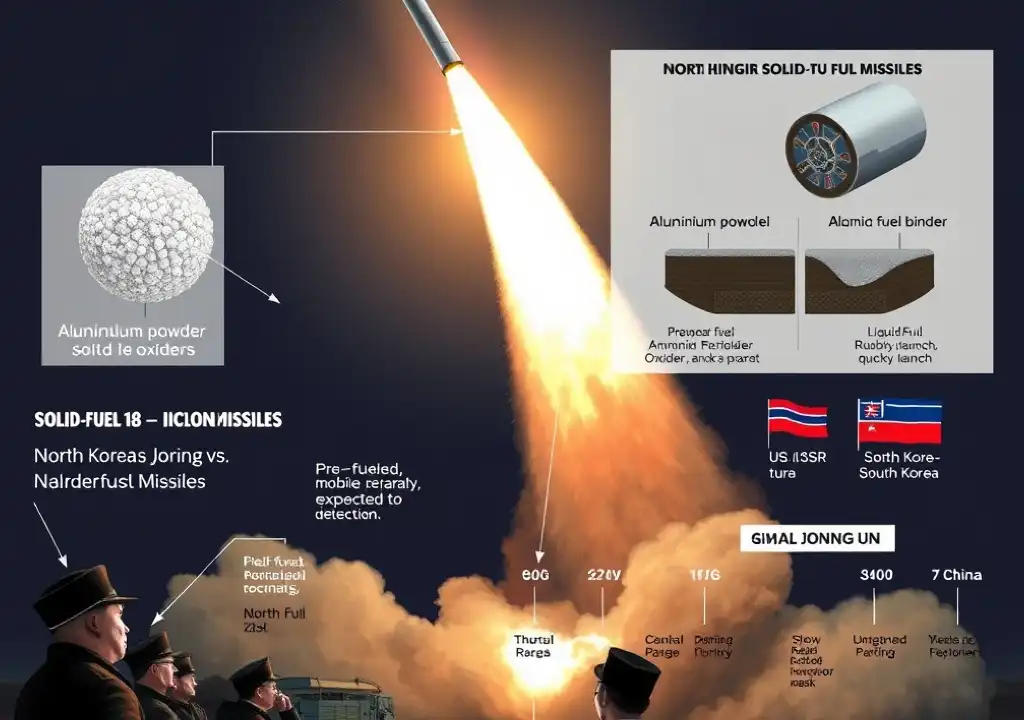North Korea recently announced the successful test of a new solid-fuel intercontinental ballistic missile (ICBM)—the Hwasong-18—marking a major shift in its missile development strategy. But what is solid-fuel technology, and why is Pyongyang prioritizing it?
What is Solid-Fuel Technology?
Solid-fuel propellants are a compact blend of fuel and oxidiser. Aluminium powder is commonly used as fuel, while ammonium perchlorate, a chemical salt, acts as the oxidising agent. These substances are held together in a rubbery binder and packed inside a missile’s metal casing.
When ignited, the oxidiser releases oxygen that reacts with the aluminium, producing extreme heat—over 5,000°F (2,760°C)—and thrust that propels the missile.
Why is Solid Fuel Important?
Solid fuel burns quickly and efficiently, providing intense thrust in a short duration. It also has the advantage of being storable for long periods without degrading, unlike liquid fuel.
Experts like Vann Van Diepen of 38 North say solid-fuel missiles are easier to handle and require less preparation before launch, making them harder to track and target.
Joseph Dempsey of the International Institute for Strategic Studies highlights that these missiles can be “pre-fuelled” at the factory, allowing for near-instant launch readiness.
In contrast, liquid-fuel missiles require on-site fuelling—a time-consuming process that exposes them to detection and possible preemptive strikes.
Who Has Mastered This Technology?
Solid-fuel propulsion dates back to ancient Chinese fireworks but evolved significantly in the mid-20th century. The US made notable advances, followed by the Soviet Union’s RT-2 ICBM in the 1970s and France’s SSBS.
China began testing its own solid-fuel ICBMs in the late 1990s, while South Korea now claims to possess highly efficient solid-fuel missile technology.
North Korea’s Motivation
The Hwasong-18 is said to significantly boost North Korea’s nuclear strike readiness. State media quoted Kim Jong Un asserting that the missile would enhance a military doctrine based on proportional and total retaliation—“nuke for nuke, all-out war for all-out war.”
The new missile represents a strategic shift toward faster, more unpredictable launch capabilities.
What Lies Ahead?
Despite the test, South Korea’s defence ministry suggested that North Korea still faces challenges in mastering this complex technology.
Ankit Panda of the Carnegie Endowment for International Peace noted that developing large solid-fuel missiles can be structurally risky, particularly as booster sizes increase.
Even if not revolutionary, the Hwasong-18 could complicate U.S. and allied military planning by increasing North Korea’s first-strike capabilities.
In response to the launch, South Korea and the U.S. conducted a joint air drill involving a U.S. B-52 bomber—highlighting rising tensions in the region.

